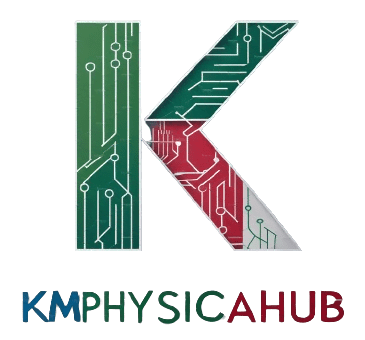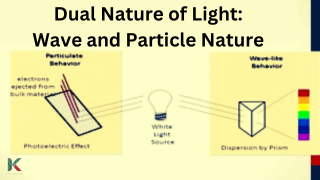Shedding Light on Optics: Wave-Particle Duality, Properties, and Real-World Examples
Light is an interesting subject, which is a subject of discussion for quite a long time and possesses numerous valuable characteristics and uses. This depends mainly on its efficiency to reflect, reradiate and be absorbed by for various technology and has become such an important factor in our day to day lives. Studying light is the focus of a branch of physics known as optics. Optics is the branch of physics that studies the nature, effects and behavior of light and its reaction to matter.
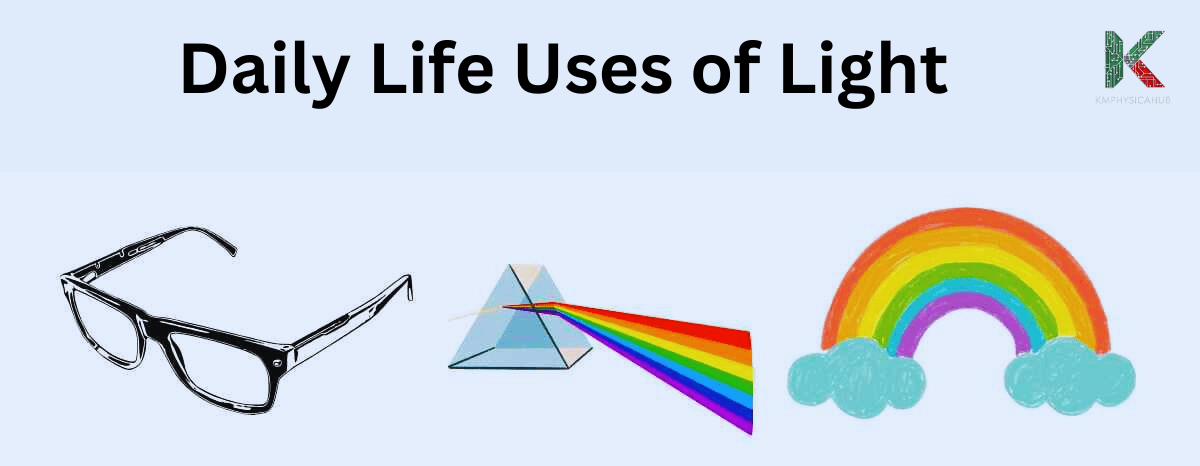
Definition of light from various aspects
Light is a form of electromagnetic radiation distinguished by its nature, wavelength, frequency and velocity when in the course of wave-like movement. Light is a versatile term and forms the basis of our experiences. Here are some definitions related to this subject:
- Electromagnetic Radiation:
Light enables vision through a process that acknowledges it as a form of energy. It concerns the light seen during the day, from the sun, fire, lamps, and so on, and at night as well. This electromagnetic radiation has been known to travel in straight lines through a vacuum and has a fixed velocity that is estimated to be about 186,000 miles per second or 299,792458 meters per second and can be seen with the naked eyes.
- Daylight and Celestial Bodies:
Natural light is defined as the light which is available during the day also commonly referred to as daylight. Stars and moon and all other objects also emit light and the light that comes form these sources is the light that reaches us from space.
- Colors and Pale Shades:
Light can refer to a color of notable lightness or a pale color.
For example, light blue is a shade with medium saturation and high lightness.
- Spiritual and Inner Illumination:
Light reveals the mind as well as good in a dark place and evokes truth and enlightenment. It enlightens the darkness, dispelling ignorance and showing ways.
- Public Knowledge and Insights:
Light can represent knowledge, facts, and understanding. Shedding light on a problem means providing clarity and insight.
- Mediums and Windows:
A medium (like a window) through which light enters is also considered light.
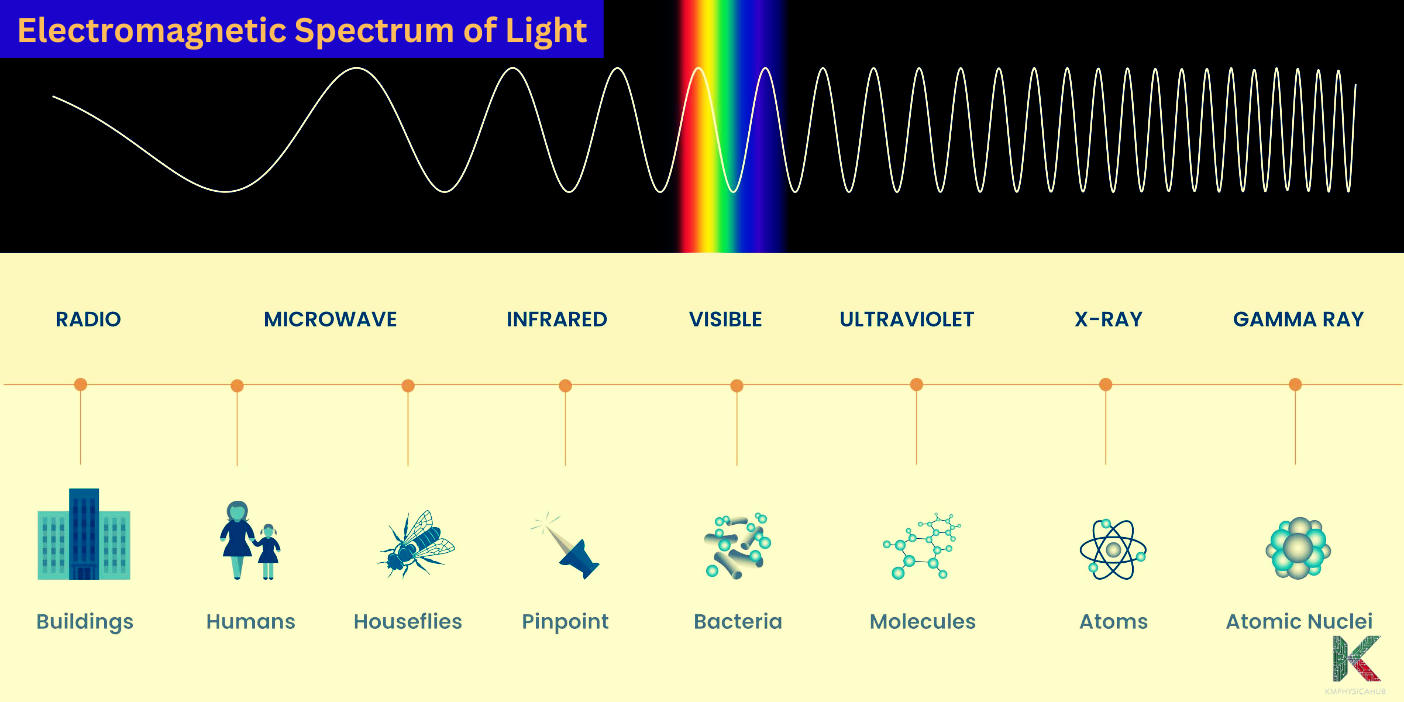
That is why light can be viewed as a physical phenomenon as well as loaded with metaphorical shades, which makes the analysis of this topic intriguing and diverse.
History of Light
The evolutionary journey of physics and light has been crucial in shaping our understanding of the universe and has had a significant impact on various aspects of our lives.
Ancient Greece (800 BC – 200 AD):
The Greeks were thinkers and natural philosophers who believed that optics belong to the same class as the other natural sciences. Some of the well-known scholars that have Left a mark in this area include Euclid, Ptolemy, and Archimedes among others and this was during the ancient Greek period with the focus on Athens later shifted to Alexandria.
Islamic Civilization (750 – 1258 AD):
Despite this stable period seeming not to have catalyzed much progress, Muslim scholars based in Baghdad and Cordoba particularly produced substantial progress in optics. Alhazen (Ibn al-Haytham) proved and experimented with light and vision as well as his work had an impact on later Europeans.
Medieval Europe (14th century):
European scholars gained access to Greek and Islamic knowledge through the Crusades and the conquest of Islamic Spain. This led to the scientific revolution in the West, with figures like Kepler, Galileo, and Newton shaping our understanding of light.
20th Century and Beyond:
Because of the discovery, light could be understood to be something with particle like characteristics as well as be an electromagnetic wave. Furthermore the improvement of communication technology brought science and optics as a subject into an international concern.
Finally, it can be noted that throughout the history, which began with Ancient Greece and continued with modernity, there was a progressive development of ideas, enrichment of cultural experience, and breakthroughs in the field of science to explain the nature of light.
Experiments of Isaac Newton Concerning Light
Sir Isaac Newton, an esteemed figure hailed as a luminary historic scientist, contributed excitingly to the light studies. Late in the 17th century Newton carried out a series of experiments which can be considered as the precursor to the modern optics experiments.
Prism Experiments:
Newton formerly carried some experiments with prisms during later part of the seventeenth century. He was able to show that white light is bent by using a prism, and in doing so, deconstructing the light into many colors. This led to his infamous work known as ‘Opticks,’ where he wrote about light as well as Colors.
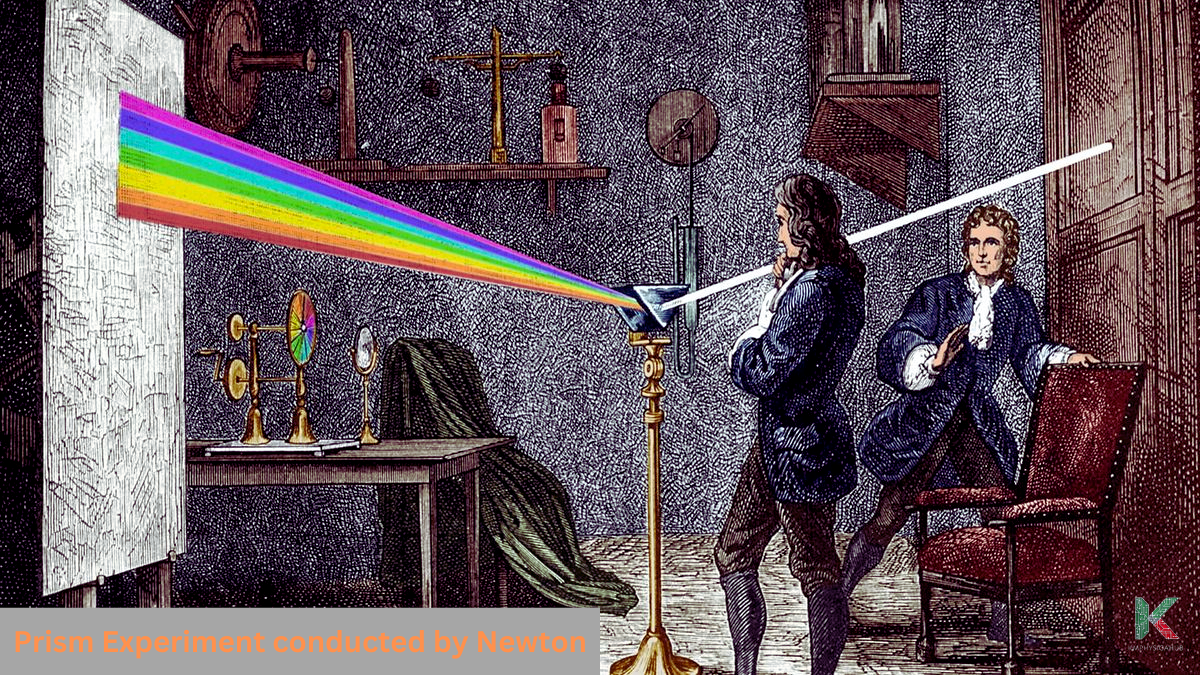
Color Theory:
Newton put forward the idea that colors are actually related to light’s various undulating waves. He gave distinction of primary colours–the basic colours–of light which are red, green and blue and how other colours can be made out of them. First map of colors was created by him that laid the structural base of color theory even today.

Particle Theory of Light:
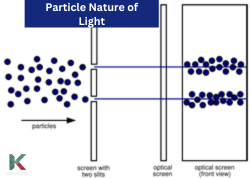
Newton himself held light to be comprised of corpuscles which he postulated to move in straight lines. Reflected and refracted light was explained to him using this particle theory More specifically, the form of dispersed light could be portrayed through this particle theory.
Law of Reflection and Refraction:
Newton was the person who established laws for reflection and refraction. The law of effect states that the degree of light plus the degree of reflection plus the incoming reflection rays will be of equal degree. Snell’s law is based on the refraction formula that provides explanations of how the light disperses when it is transferred from one medium to another.
Newton’s Rings:
Newton studied interference patterns in thin films (such as air between glass plates). These patterns, known as Newton’s rings, provided evidence for the wave nature of light.

Critique of Huygens’ Wave Theory:
Newton also did not accept the wave theory of light put forward by Dutch physicist Christiaan Huygens. He stated that particles provided better account for some events such as rectilinear propagation.
The discoveries made by Newton on the nature of light and its behavior through optics were revolutionary in shaping science and technology. These contributions made a significant impact in the formation of the infrastructures of modern optics, peculiarly the camera, telescope, and microscope. They also formed the basis for reasoning about physical properties and conduct of light in various conditions, including astronomy and quantum physics .
Discoveries of Einstein Concerning Light
It is important to note the light was not traditionally defined in this manner until Albert Einstein provided his groundbreaking considerations on the topic that shifted our view of existence. Albert Einstein dramatically changed the perception of light and how it behaves. Here are his key contributions:
Constant Speed of Light:
The Special Theory of Relativity, given by Einstein in 1905, states that light always moves at the same speed, regardless of how fast you are moving. This constant speed is approximately 186,000 miles per second or 300,000 kilometers per second in empty space.
Wave-Particle Duality:
Einstein made further enhancements to the theory that focused on the wave-particle duality idea. He demonstrated that light has dual nature they behave like waves and particles at the same time. This paved way for the modern physics and the discovery of quantum mechanics as well as the particle physics that form the building blocks of matter.
Energy Distribution:
Einstein observed that the energy distribution of the emitted light from hot objects which are either solid or liquid (such as the filament of a bulb) was of similar nature as a gas. This observation violated the classical Newton’s wave theory of light and indicated that light has particle like properties.
Einstein earlier concepts related to light changed the current principles of physics and paved way to great discoveries to the way universe truly is.
Nature of Light: Wave-Particle Duality
Light is a wonderful subject of study on account of the fact that it has two astonishing properties.
Wave Nature:
It is a transverse electromagnetic wave, and this is a phenomenon that humans have the capability of perceiving in the form of light. This wave-like nature was first observed by experiments in diffraction and interference. Like all electromagnetic waves, light can move through the vacuum space since it is not made up of particles that can be compressed. We can confirm the transverse nature through polarization.
Quantum Aspect:
In quantum theory, light consists of discrete packets of energy called photons. Neither a classical wave model nor a classical particle model fully describes light; its dual nature emerges in quantum mechanics that further leads us to the phenomenon of entanglement of photons.
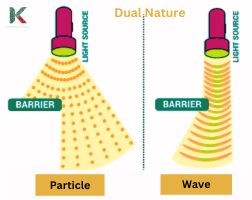
How does the wave-particle duality impact our understanding of light?
The principle of wave-particle duality is one of the key principles in quantum mechanics that revolutionizes our thinking about light. Let’s delve into its implications:
- Dual Nature:
It can be observed that light is of both wave and particle nature. As a wave, it goes through interference, diffraction, and polarization. When it is taken as particles, light consists of packets of energy called photons.
- Quantization of Energy:
The theory that describes light in terms of quantized packets contradicts classical physics. Each quantum has a definite amount of energy given by the equation:
E = hf
where:
(E) is the photon’s energy,
(h) denotes Planck’s constant ((6.626 \times 10^{-34}) J·s),
(f) stands for frequency of the light.
- Photoelectric Effect:
In order to make clear the photoelectric effect Einstein employed corpuscular nature of light. Material can emit electrons when photons (light) strike it with an energy above its work function; this phenomenon is known as the photoelectric effect. The idea of quantized energy levels was supported by the photoelectric effect.
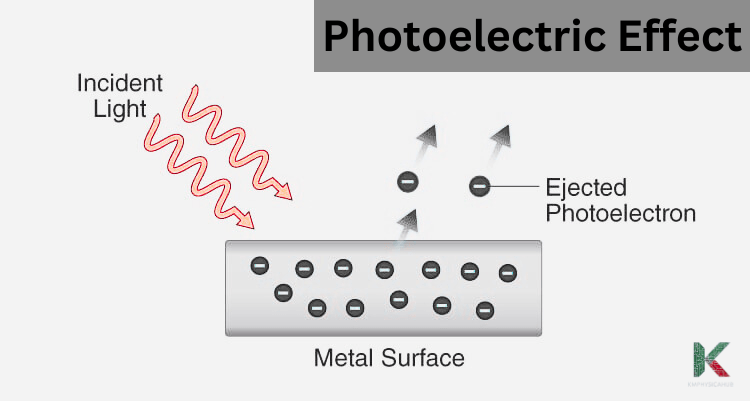
- Complementarity:
Wave-particle duality indicates that we cannot have both complementary descriptions at once on the same surface but one can describe light as either a wave or a particle. Besides photons’ cases other particles such as electrons are also applicable here since dualism cuts across all particle types.
Our classical intuitions are challenged by wave-particle duality which reveals how light dances at macroscopic and quantum levels at once in very complex ways involving all kinds of twists and turns possible even through thin air by a beam of light – whether our naked eyes can perceive them or not!
Practical applications of wave-particle duality
There are many practical uses of wave-particle duality in different technologies today. Here are a few:
Quantum Mechanics and Lasers:
Light, and its dual nature, as both wave and particle, is central to quantum mechanics. Lasers (Light Amplification by Stimulated Emission of Radiation) are based on the quantization of photons. Laser is used in communication systems, medical, cutting, printing and a wide range of applications such as consumer products.

Photovoltaic Cells (Solar Panels):
Photovoltaic cells are the devices that are used to convert light energy (photons) into electrical energy. They use the photoelectric effect to generate electricity in the solar panel.
Digital Cameras and Imaging Devices:
Actually, digital cameras capture pictures using photons which are particles and then record waves. This way, understanding both aspects ensures that images are represented in an accurate manner.
Quantum Cryptography:
Quantum key distribution is an application of quantum mechanics and works on the properties of light. It allows for secure communication by checking for wiretapping using infrared LEDs.
Fiber Optics:
Fiber optic communication uses total internal reflection of light waves. The wave nature ensures efficient data transmission over long distances.
Quantum Computing:
Quantum computers manipulate quantum bits (qubits) using light. Wave-particle duality plays a role in quantum algorithms.
In summary, our technological advancements owe much to our understanding of light’s dual nature!
Characteristics of light
- Intensity:
Light’s brightness or energy per unit area defines its intensity. It varies based on the source and distance.
- Propagation Direction:
Light generally moves in a straight line but if it gets to an interface or a different material its direction is altered.
- Frequency or Wavelength Spectrum:
The waves differ in the lengths, which produce a range of colors going from red (the longest wave) to violet (the shortest wave).
- Polarization:
Light waves can oscillate in certain directions. Sunglasses with polarized lenses work well to block glare.
- Speed in Vacuum:
In the absence of any medium, light has been determined to travel at a constant speed of approximately 299,792,458 meters per second.
It is important to remember that light as a medium is involved in numerous phenomena, ranging from vision to the creation of new technologies.
Properties of light
- Polarization:
Let’s talk about polarization! It refers to how light waves oscillate in different orientations. The polarization of light can be in the linear, circular or elliptical form. One can use polarized sunglasses for reducing glare for sheer by preventing some of the orientations fully.
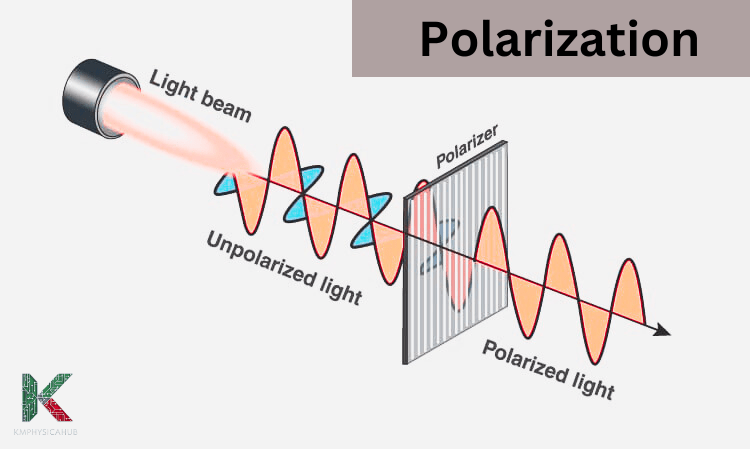
- Interference:
There is always interference when two or more than two light waves meet. Constructive interference increases the waves while destructive interference is the opposite and decreases the waves.
Some examples are thin film interference effects similar like oil floating on water and interference pattern formation in double-slit experiments.
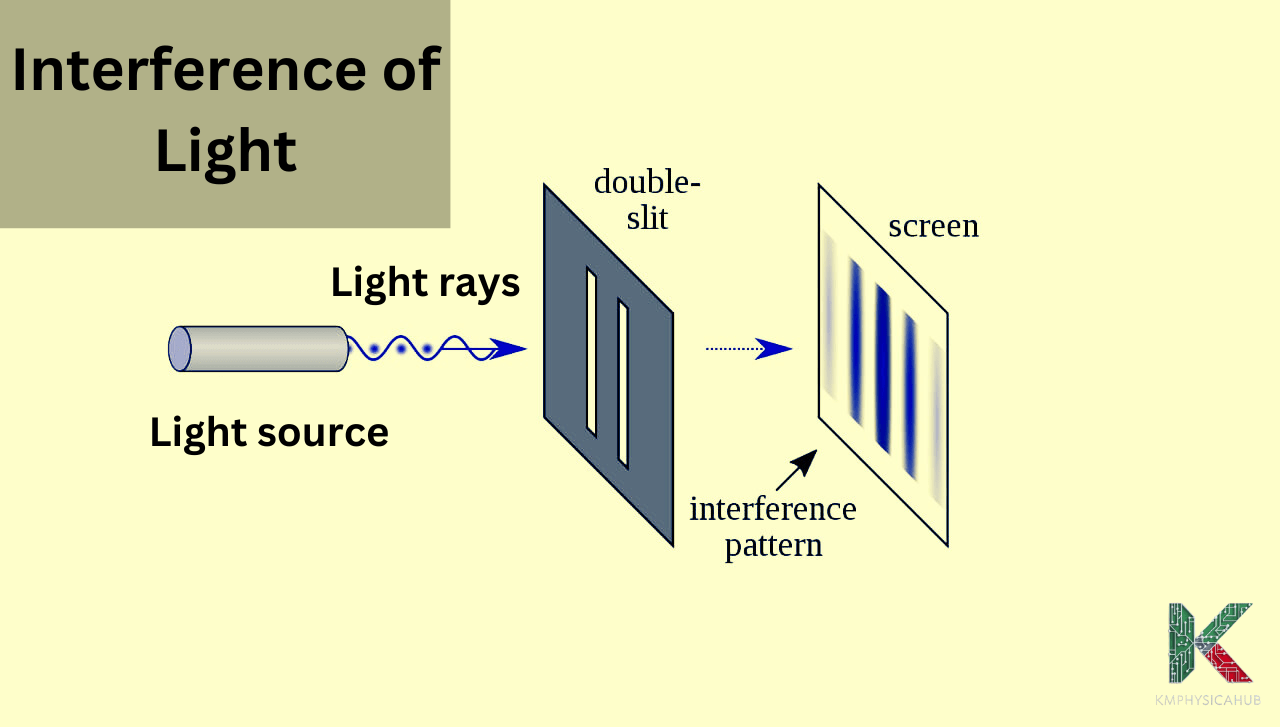
- Diffraction:
Diffraction is the spreading of light around objects or through narrow openings or slits. It forms patterns (single slit interference pattern) and influence the resolving power of telescope and other related instruments.
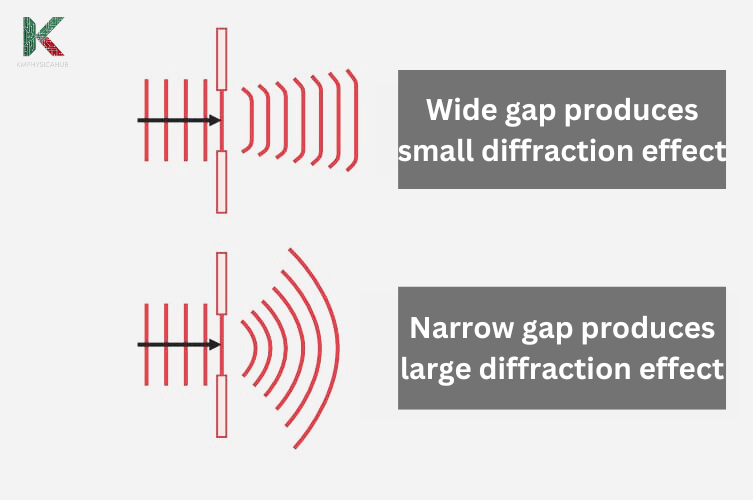
- Reflection:
Reflection comes into play when light beams are reflected off a surface. The law of reflection holds that the angle of approach of light to a surface is equal to the angle of reflection of the surface. This is because mirrors and polished surfaces are based on reflection.
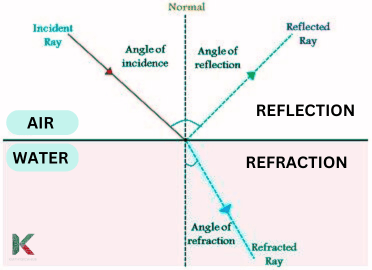
- Refraction:
Refraction is the phenomenon whereby light changes direction as it passes between two given media.
It follows Snell’s law: Snell’s law is given by the expression:

Children can observe lenses, prisms, and rainbows and explain how they involve refraction.
Real-World Examples of Light
- Reflection:
Mirrors: When light waves hit a smooth replicate surface, they bounce back, forming an photograph. Mirrors are used in normal life, from dressing rooms to telescopes.
Radar and Sonar: Radar and sonar find out how far things are. They send out sound or radio waves to bounce off things.

- Refraction:
Rainbows: When sunlight passes through raindrops’ it separates into different colors and form a rainbow in the blue sky.
Prisms: White light through a prism divides into colors.

- Polarization:
Sunglasses: Polarized sunglasses stop horizontal glare, like glare from water.
- Interference:
Surf Waves: When sets of ocean swells with comparable frequencies interact, they shape interference styles. Surfers can expect wave heights primarily based on those patterns.
Applications of light in daily life
One of the most substantial roles that light plays in our daily lives is to take a lot of applications in the field of technology. Herein are some of the examples of the application of light in daily life such as:
Photosynthesis:
Visible light is the key to crops’ productivity and growth of plants through photosynthesis. This is how plants “fuel” themselves by converting light energy to glucose and oxygen, which are both used for growth and development.
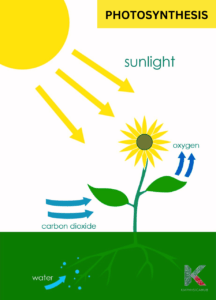
Fiber Optics Communication: Extremely thin pieces of glass or plastic fibers called optical fibers receive and transmit light pulse-based data. All visible light wavelengths that we can see by our eyes (which are near 400-700 nanometers) are using in optical communication. It functions using light pulses to encode information, making fiber optics very efficient for data transmission.
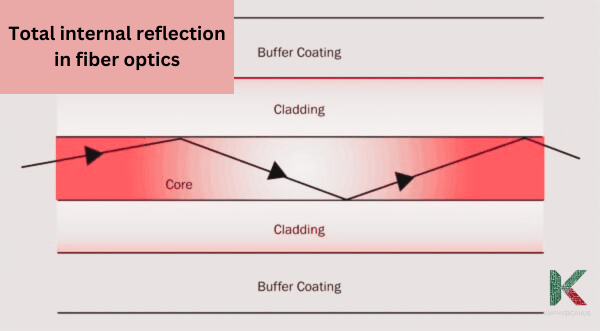
Vision and Sight:
Our eyes catch the colors and the light that reflect from different objects, which in turn allows us to see everything around us. Photoreceptor cells are present in the retina and they are sensitive to distinct wavelengths of light, which involves seeing.
Regulation of Body Growth and Sleep:
Besides light exposure, the sleep-wake cycle or the circadian rhythm of the body, which manages the sleep patterns and the body changes, is affected. The time of the natural day seems to be less important in regulating our biological clocks.
Drying and Evaporation:
The sun’s heat is looking after the evaporation process of the water molecules by forcing them to get away from the surfaces. This process of evaporation is also used in cloud formation.
Sanitation and Scavenging:
The utilization of UV light for the purification of water and air helps to eradicate the spread of potentially harmful microorganisms and supervises the sanitation and cleanliness of water and air. This way of refreshing is a technique, which effectively destroys the harmful bacteria, viruses, and other causative agents, thus, makes water and air safer.
Temperature Regulation:
Radiation affects the temperature of surfaces when it is hot. The sunlight heats the earth’s surface, which in turn causes weather patterns and climate change.
How does light affect our mood?
It is a fact that light greatly influences our mood and our everyday life is also influenced by light pollution.
Natural Light and Circadian Rhythm: Sunlight that is natural to our earth during the day is vital for us to be able to set our bodies inside so that they work on a daily basis (circadian rhythm). It involves cycles of sleeping-waking, the level of attentiveness, and the overall mood. The absence of natural light can end in the rhythm being disturbed, this in turn impacts the emotional state and energy levels.
Seasonal Affective Disorder (SAD):
A number of individuals go through SAD when it is darker. The loss of daylight might be held responsible for such symptoms as depression, exhaustion, and irascibility. The operation of light therapy (using special lamps) in this regard is meant for reducing the symptoms of these conditions.
Blue Light and Alertness:
The site of blue light coming from monitors and LED lights is the reason for the decrease in the secretion of the hormone melatonin. It consequently leads to an increase in the level of alertness. Hindered night time exposure in the abundance could lead to alteration in sleep schedule and make the psychological mood is going to be harmful most likely.
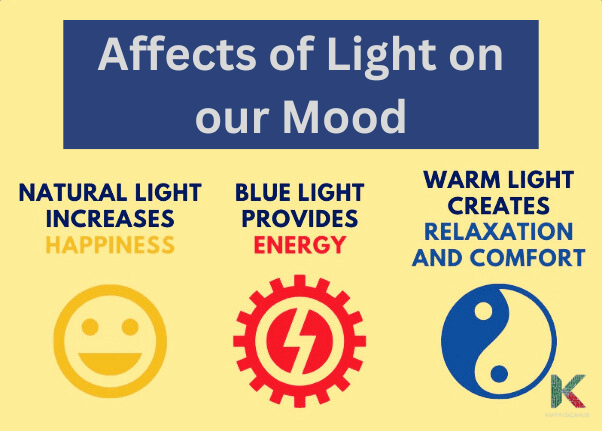
Warm vs. Cool Light:
The temperature of light which has been measured in Kelvin, differs in its affection for different moods. The presence of some yellowish light (about 2700K) will make the room look cosy and create a very calm atmosphere. Cold blue light (approximately 5000K) brings alertness.
Light and Productivity:
A well-lit room is very conducive to a person being productive and focusing. A properly lit space that is provided at work makes a positive difference both to productivity and the ability to concentrate.
Emotional Associations:
These ideas, as we have very close links with light, are very responsive to us. Taking into account that warm light is the provocative force for the feeling of relaxation and intimacy while the bright rays of sun can cheer us up, this follows that it is possible to have the current feeling that one gets.
However, it should be noted that the reactions of individuals to light differ to a large extent, even though, in general, light has a big influence on our psychological balance!
Conclusion:
Light, one of our fundamental entities, existed since the creation of our universe and has been an object of study and a subject of human experience for centuries, from the speculative views of ancient times to the scientific exploration of current time.
Defined as an electromagnetic wave that encompasses the area of the human eye, light characters its exclusive properties and traits, such as reflection, refraction, and interference in different areas that have been utilized effectively in daily life.
Light, in which researchers’ path of hypothesis became the surest path to understanding the nature of light, has been marked by many milestones and to the end of the year, it was Newton who stood as the pioneer in the field with his groundbreaking experiments that revealed the particle nature of light and its color spectrum, and Einstein’s innovative and revolutionary theory of relativity, which introduced the concept of light as a particle and a wave.
These scientific advancements have not only amplified our understanding of the physical world, but they have also led to the creation of innovative inventions such as the virtual glass, photography, and solar energy as they are some of the real-world examples application. The light that we are still looking for would certainly make our future different in the other way as the mystery of it affirms that sustained scientific curiosity and research is often a means of mattering.
FAQS
Q1: What is the electromagnetic spectrum?
The electromagnetic spectrum is the entire range of electromagnetic radiation, such as radio waves, microwaves, infrared, visible light, ultraviolet, X-rays, and gamma rays. The wavelength of each of them decides their position from the beginning (longer waves and lower frequency-radio rays) and the end (gamma rays shorter waves and higher frequencies).
Q2: Where does visible light fit in the electromagnetic spectrum?
Visible light is the radiation that we can notice, i.e. that part of the electromagnetic spectrum that we can visually perceive. Its wavelength ranges from about 400-700 nanometers. Other forms of electromagnetic waves such as X-rays, UV, and Infrared are invisible to the naked eye but have significant commercial applications.
Q3: How did ancient cultures view light?
Ancient cultures often had mythological or philosophical views on light. For instance, the ancient Greeks have a different outlook; they thought light is an entity that emits from the human eye, thus, the human enlighten it to be visible, take “see” as a verb root.
